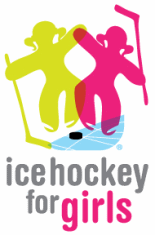VIERUMÄKI – All good things come to an end, and so did the week-long women's hockey camp where hundreds of people got together in five different programs: high performance camp, hockey development camp, game officials program, Learn to Play program, and an observer program.
“The camp experience has been a huge move forward for the women’s game,” says Tanya Foley, the IIHF’s Women's Program Manager and director of the High Performance Camp.
“This year the high performance camp has taken a more serious approach, and the focus is now on becoming an athlete who happens to play hockey, not just a hockey player out there having a bit of fun,” she says.
Many of the staff members have noted an improvement in the camp’s level of play, even compared to just last year’s camp in Bratislava, Slovakia.
“The skill level is a bit higher, partly because the federations sent their best athletes because they now understand how much the athletes get out of it, and they want to give their top players that opportunity.
“But a part of the development is simply a matter of girls getting more attention. There’s more confidence and belief, and there are more things happening at home, and women’s hockey development is no longer just one camp a year. Even if new developments are coming slowly, the results come fast,” Foley says.
This was the first time both the high performance camp and the hockey development camp were held under the same roof.
“On the development camp the focus is on the whole world, and we had people from, for example, India, Macau and Hong Kong attending the camp. It will probably take a long time for them to be on the high performance camp side, but now they’ve had a chance to share the same building and be here, they’ve seen a world that they might have never known existed,” Foley says.
“It’s been a great opportunity for the people in the development camp to see what the top nations are doing, and to learn, and maybe one day we’ll see people from the development camp in the high performance side,” says Darryl Easson, the IIHF’s Sport Development Manager.
Even the game officials had some extra instructors at the camp, and a program that was more advanced than ever before. Also, one of the new things on the officials’ camp was the first-ever trial of a four-man system which, according to initial reactions from the referees, seems to have been a success.
“This is the first generation of female hockey players who have hockey as their first sport. People in the past have started out with another sport and gravitated towards hockey as it became available to them,” says Foley.
As for coaches and other staff, it may be the same. For many, switching to women’s hockey has been just that, a switch. An eye-opening one.
“Many here started on the men’s side, but as soon as they come to women’s hockey, they love it. The players are doing it because they love the game, and it’s the same with the coaches. That’s it, there’s nothing magical, it’s just passion,” says Foley.
“There are definite differences, girls are different from boys, and they’re motivated by different things. That’s what makes it special and that’s what’s part of the education here. The coaches that we have may not get as much support at home as we’d like, and even when they do get it, it’s from the men’s side. So it’s a different perspective,” she adds.
The good news for women’s hockey is that each investment yields big returns. Still, growing the game takes time, and patience is a virtue. Foley says it takes about a generation to change people’s attitudes and thinking processes. However, by sharing experiences, the process can be speeded up.
“Every nation is at a different stage, but they also face the same challenges, but at different times. Here you can talk, and see what you can share and how you can help,” says Foley.
“The under-18 age group is our focus right now, but down the road we may look at even younger age groups because if you don’t start training properly by the time you’re 16, you’re already way behind and may never catch up,” she adds.
But even if the camp ends, the work continues. With new found vigour and determination.
“A camp every year is a priority for us, for sure. It’s important to give everybody the opportunity to see what the rest of the world is doing and measure themselves against the others. The unique thing with women’s hockey is that different countries do work together. Not many sports do that.
“It’s a matter of continuing to work with the players on the high performance side, and have them understand what they will have to do. On the development camp side, we want to share the love of the game, and find the future leaders of the sport around the world. That’s where you get the strength: people who really want to see things move forward,” says Foley.
RISTO PAKARINEN |
 |
 |







